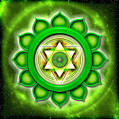Your Meditation Device
Techniques ·Meditation is the vehicle which helps your consciousness seeking to return to its source.
Your consciousness seeks to know itself. That quest to know itself is played out in every human, even though we may not know that. It comes as a search for truth in part.
In meditation we rely on a device that helps to take you inwards to the very essence of yourself. That device can involve using the breath, or perhaps a mantra - a sacred word used to help your consciousness drive deeply towards its source. Another device often used is the focus on a chakra, itself a gateway to move deeper inside yourself.
Each of these devices in itself is a high principle of life itself and a gateway to the ethereal parts of yourself.
Take for example using the breath as a meditation device. Breath is the root of life. Yoga devotes a significant amount of practice called ‘pranayama’ incorporating right breathing techniques and postures to enable the union of your mind and body.
Pranayama
Pranayama is the conscious awareness of breath: the life force that both energises and relaxes the body. The term is derived from the Sanskrit word, prana, meaning ‘life force,’ and ayama, meaning ‘extension.’ The controlled breathing enables both the rhythm of performing yoga poses and relaxing the mind for meditation. Letting go of the mind (and body) allows your consciousness to return towards it source.
Mantras
Similarly using a mantra is the process of quieting and focusing the mind using a sound, word or phrase recited either aloud or silently. The purpose of mantra meditation is for religious and spiritual growth, or for relaxation. It is also known as japa meditation, from the Sanskrit word for ‘muttering.’ Mantra meditation is an essential practice in many forms of yoga, helping to deepen inner awareness. It is also a ritual used in many Eastern religions, including Hinduism, Buddhism, Christianity, Sikhism and Jainism.
The importance of the Word in all cultures and religions is seen as a gateway to spiritual experience. For example, in medieval times the chanting of verses in prayer and ritual was used by monks. Monks would chant (aloud or silently) the Pater Noster (the Lord’s Prayer) in Latin 144 times per day. To do this yourself creates an amazingly powerful state of consciousness. To chant the Lord’s Prayer in Ameraic (it’s original spoken language) is even more powerful. Unfortunately language today has lost much of its spiritual power as modern languages have replaced old.
Chakras
Using a chakra or centre as your meditation device means selecting one particular chakra and plunging your consciousness into it. This is accompanied by sounds (mantras perhaps) or breath into the centre and leads to an awakening of the energy centre or chakra. It is said that chakras act as the anchor point for your ethereal subtle bodies to your physical body. These anchor points serve as vital gateways for the exchange of subtle energies as well as points of involution (movement inwards) for your consciousness.

Your Device
So the device in meditation is an important instrument. Choosing one device and sticking with it is essential to getting results. It assists your consciousness in its return home and takes your consciousness beyond your ordinary, everyday mind. It is the device that brings your meditation back in focus when your mind scatters like marbles dropped on a stone floor.
The more you bring your mind back to the device, the more you sharpen the blade that cuts through the endless thoughts. And with just a little time and perseverance, the mind surrenders. It becomes disciplined. It is there to serve. And eventually it becomes an instrument bringing clarity. A silent mind. A calm mind.